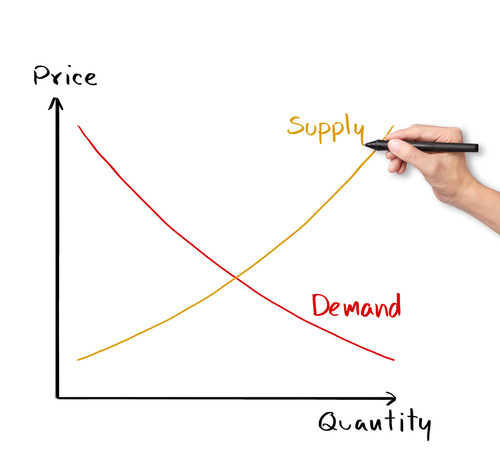It’s a tough market to raise your prices. Customers are extremely cost conscious and market savvy. Why should they pay more? Instead you need to reframe the problem into a yield optimization problem. How do you maximize yield or profit from your existing product/service offerings and from your existing operational footprint (facilities, staff structures, technology, distribution channels).
- New Basic Products: In a niche manufacturing/technology business we are introducing an entry level material testing system with limited electronics aimed at the education market. We have everything in place at a fixed cost level to take the product to market. It’s a gap in their market that is badly serviced but where demand is high.
- New tiers of service: A successful high school travel company, known for their premier product introduced budget trips across the globe for the cost conscious family. It uses the same infrastructure, finance department, tour operators etc. as the core business, but this new “lite” product has fewer luxuries. It has been a tremendous success with a boost to profits.
- Simplify features: Most software companies have moved down the “feature creep” road. More and more features are added to the point where the customer is using 5% of the features. Sometimes you can re-engineer the cost structure of a product to the point where the features are simpler, the product is more popular and the sales process is relegated to a neat e-commerce sale on your web site. The battle is to maximize the profit not the sales price.
- Gross margin engineering: Increasing sales prices is tempting because it goes straight to the bottom line. But what about the competitive move? What will it do to your volume? Will yield really increase? Re-engineering the components of your variable costs can be much more fruitful. Revisit supplier agreements, engineering processes, commission structures, materials consumed, development processes, shipping costs, fuel costs. Ensure you really have optimized the cost structure before going for the price rise. And ensure you look at gross margin by product for unusually low yields.
- Discounts: Sure everyone has a rate card but how far off that price are you selling. Discounts can add up quickly and kill your average yield by product. Monitor and discipline persistent discounters in your sales team. Much more on this in a later blog post.
- Positioning: Sometimes the key is not to increase sales price but what is needed is to relaunch the product with a new story, a different target market and ultimately a new price structure. A switchgear manufacturer once sold to contractors who were building new office blocks. The problem with this target market was that their margins were so low and they were very sensitive to price increase from their suppliers. Solution involved the switchgear manufacturer selling directly to the building owners at a far higher price. The story had to become more sophisticated but it worked.
- Configured Vs Off the shelf: Similar to positioning is the problem of defining the business you are truly in. If you build a standard product. It could be in printing, retailing, medical devices then you will always be open to comparison. Consider what products and services are configurable and potentially unique to allow you charge rarity value whilst still delivering a superb ROI to the customer.
- Business Model Thinking: The SaaS model emerged as technology and pricing pressures bore down on suppliers. Customers wanted to consume software in a more effective way and at a cheaper price. But that didn’t mean that software companies became less valuable. Selling software as a subscription model over the long term should be as profitable or more profitable than the old high priced client/server model. Could you change your business model to gain more traction at a better long term yield?









Hi Ian,
Customers must see the value. It’s that simple. Increasing the value is harder then simply raising the price, of course. But it’s what your customers will respond to best.
Thanks Heather. It seems these days people want more value for less! It’s clear that the only way to think about your customer is the value, the outcomes you deliver. Forget features and benefits. You need to think about specific outcomes for each specific customer.
Ian & Heather: Interesting thread on the relation between value and price. My question is: How do you get paid at the end. What do you do with the fiat paper currency you get when you look at the decreased purchase power of the dollar. I have made a philosophical point in the section, WorkShop, on my business site:
“I am open to discuss different terms of exchange of values, i.e., delivery of service and payment. As a supporter of objective money, i.e., precious metals, my standard price is 1 kg / ~35.27 oz of silver (Ag) according to the buy rates at GoldMoney for a 1/2 working day (circa 4 hours, effective time).”
I will add another terms of payment: X American Silver Eagle (1 troy ounce) $1 coins according to the spot price.
Martin, the bigger picture on currency hedging, the value of the dollar, yen, euro was outside th scope of this blog post. However related to currency and price rises I would add that the impact of a potential sales price is often different in different markets. Overall I was pointing out that there are many alternatives to increase yields other than price increases.